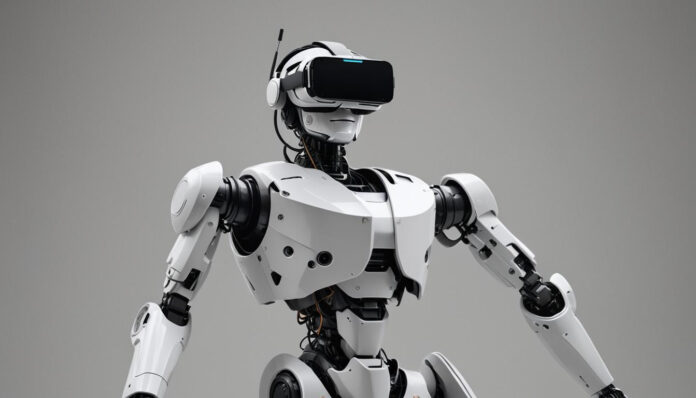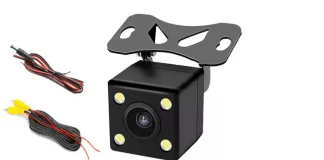We often see AR/VR capabilities or enhancements mentioned in the specifications of hardware fitted into the components that build up into an Android Headunit. We look into what AR/VR is, what it means and how it can affect your purchase decision for new headunits.
Introduction
Augmented Reality (AR) and Virtual Reality (VR) are two groundbreaking technologies that have significantly impacted various sectors, including entertainment, healthcare, education, and automotive industries. AR overlays digital information onto the real world, enhancing the user’s perception of their environment, while VR creates an entirely immersive digital environment that can simulate real or imagined worlds. These technologies are not only reshaping how we interact with the digital world but also how we drive and navigate. This blog post delves into the fundamentals of AR and VR, their current applications, future possibilities, and their convergence in the realm of Android head units for vehicles.
Understanding Augmented Reality (AR)
Definition and Principles
Augmented Reality (AR) enhances the real world by overlaying digital information such as images, videos, or 3D models onto a user’s view of the physical world. This is typically achieved through devices like smartphones, tablets, AR glasses, and head-up displays (HUDs). The technology relies on various sensors, cameras, and software to accurately place digital content in the real world.
Components of AR Systems
- Hardware: This includes sensors, cameras, display devices (like AR glasses), and processors.
- Software: Algorithms for computer vision, AR content creation tools, and integration frameworks.
- Content: The digital information that is overlaid onto the real world, including 3D models, text, and multimedia.
Current Applications of AR
- Navigation and Mapping: AR applications provide real-time directions and information overlaid on the physical world, enhancing navigation experiences.
- Retail: AR allows customers to visualize products in their real environment before making a purchase, such as furniture in their home.
- Healthcare: Surgeons use AR to get real-time data and visuals during operations, improving precision.
- Education: AR makes learning more interactive and engaging by overlaying educational content onto the real world.
Understanding Virtual Reality (VR)
Definition and Principles
Virtual Reality (VR) creates a completely immersive digital environment that can replicate real-world settings or create entirely new ones. Users experience VR through headsets that block out the physical world and replace it with a virtual one, often complemented by hand controllers and motion sensors.
Components of VR Systems
- Hardware: VR headsets, motion sensors, and hand controllers.
- Software: VR development platforms, simulation software, and user interfaces.
- Content: 3D environments, interactive simulations, and multimedia content.
Current Applications of VR
- Gaming: VR offers highly immersive gaming experiences, allowing players to feel as though they are inside the game.
- Training and Simulation: VR is used for training in various fields, such as aviation, military, and medical, providing realistic simulations without real-world risks.
- Virtual Tours: VR enables virtual tourism, allowing users to explore destinations from the comfort of their homes.
- Therapy and Rehabilitation: VR is used for treating phobias, PTSD, and in physical rehabilitation programs.
The Convergence of AR and VR
Mixed Reality (MR) and Extended Reality (XR)
The convergence of AR and VR has given rise to Mixed Reality (MR) and Extended Reality (XR). MR blends real and virtual worlds to produce new environments where physical and digital objects coexist and interact in real time. XR encompasses all forms of computer-altered reality, including AR, VR, and MR.
How AR and VR Cross Over
- Devices: Many devices, such as Microsoft’s HoloLens and Magic Leap, support both AR and VR functionalities.
- Applications: Applications often combine AR and VR to provide a more comprehensive user experience. For example, an app could use AR for navigation and VR for training simulations.
- Development Tools: Platforms like Unity and Unreal Engine support both AR and VR development, making it easier for developers to create cross-reality applications.
AR and VR in Android Head Units
Current Uses
Navigation and Safety
- Augmented Navigation: AR-enhanced navigation systems overlay route information directly onto the windshield or the Android head unit display, making it easier for drivers to follow directions without taking their eyes off the road.
- Heads-Up Displays (HUDs): Modern Android head units are integrating AR HUDs that project essential driving information such as speed, fuel levels, and navigation prompts directly onto the windshield.
Entertainment and Infotainment
- Immersive Media: VR capabilities in head units can transform the backseat experience, allowing passengers to enjoy immersive media such as 360-degree videos and VR games.
- AR Games: AR games can be projected onto the road view, providing a unique and entertaining experience during long journeys.
Enhanced Driving Assistance
- Real-Time Hazard Detection: AR can highlight potential hazards on the road, such as pedestrians, animals, or debris, enhancing driver awareness and safety.
- Parking Assistance: AR overlays can assist with parking by providing guidelines and highlighting obstacles, making parking in tight spaces easier and safer.
Future Possibilities
Autonomous Driving Support
- Enhanced Sensor Integration: Future Android head units could integrate more advanced sensors and AI to provide a more comprehensive understanding of the vehicle’s surroundings, aiding autonomous driving technologies.
- AR for Manual Override: In autonomous vehicles, AR could help drivers take over control by providing real-time data and instructions in emergencies.
Personalized User Experiences
- Customized HUDs: AR could allow drivers to customize their HUDs with preferred information layouts, themes, and notifications, tailored to their driving habits and preferences.
- Contextual Information: Future AR systems could provide contextual information based on the driver’s location, such as nearby points of interest, weather updates, and real-time traffic information.
Advanced Infotainment Systems
- Interactive Virtual Assistants: VR and AR could be used to create more interactive and intuitive virtual assistants that provide help and information based on voice commands and gestures.
- Enhanced Connectivity: Future head units might support more seamless integration with other devices and services, offering a fully connected and immersive in-car experience.
Conclusion
The integration of AR and VR into Android head units is revolutionizing the driving experience by enhancing navigation, safety, and entertainment. As technology advances and 5G becomes more widely adopted,, the possibilities for AR and VR in the automotive industry will expand, offering more personalized, immersive, and safer driving experiences. From augmented navigation to immersive infotainment and enhanced driving assistance, AR and VR are set to become integral parts of our vehicles, transforming how we interact with the road and the world around us.
The future of AR and VR in Android head units holds immense potential. As these technologies continue to evolve, we can expect even more innovative applications that will redefine the boundaries of what is possible in automotive technology. By staying at the forefront of these advancements, automakers and technology developers can ensure that drivers and passengers alike enjoy a more connected, informed, and enjoyable journey.








